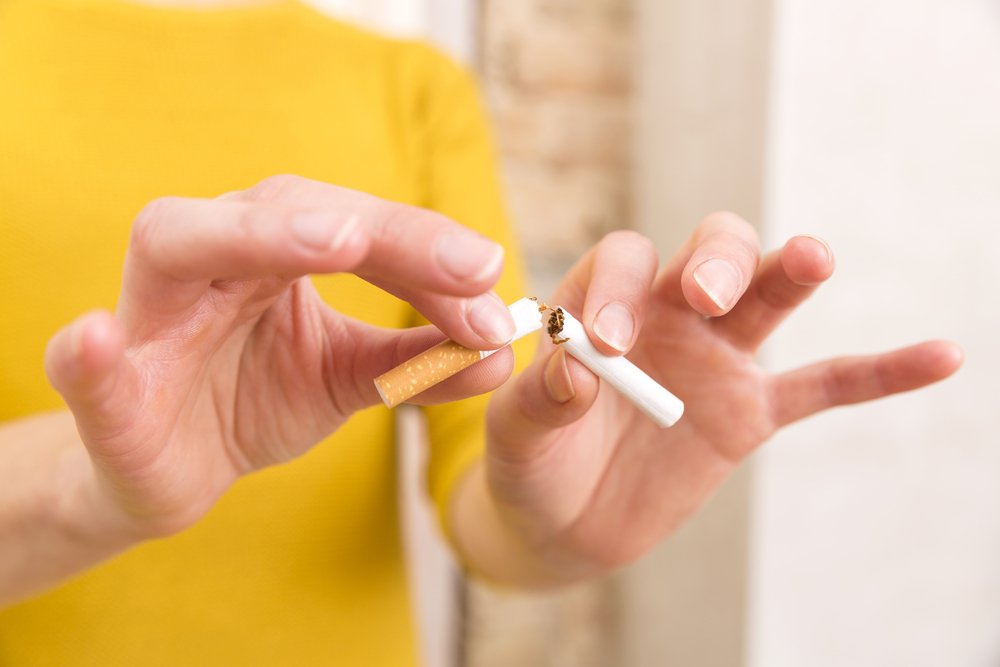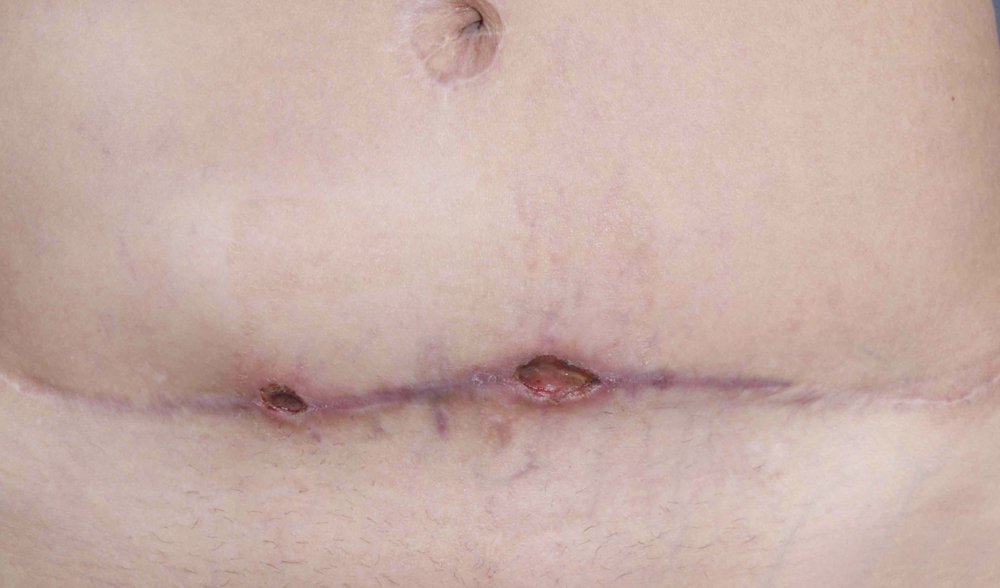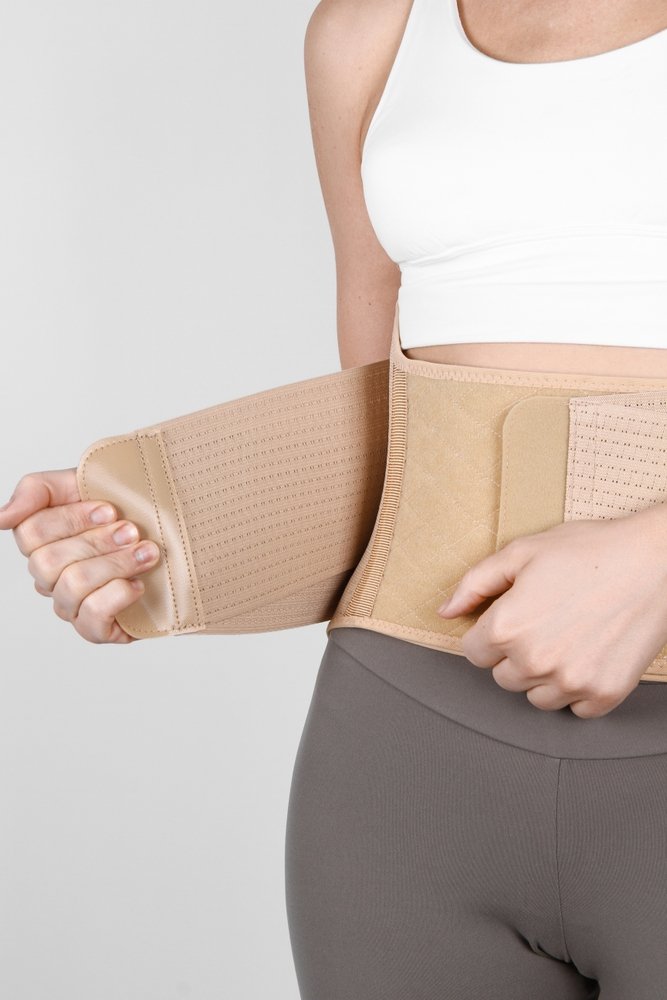The tummy tuck procedure has helped millions of people enhance their body contours after experiences like pregnancy or extreme weight loss. But any surgery, even cosmetic procedures, involves some degree of risk. When it comes to the tummy tuck, a side effect called necrosis can sometimes result in complications.
The word “necrosis” means cell death, which could mean skin cells, fat cells, or cells found in other types of soft tissues. The type and severity of post-procedure necrosis can vary, depending upon the specifics of the procedure and the patient involved.
Some problems related to necrosis include:
- Crusty, black skin
- Lumps developing under the skin’s surface
- Scars tearing open and leaking fluid
The Tummy Tuck Procedure
The goal of the tummy tuck is to remove excess skin and correct abdominal muscle separation. A tummy tuck procedure helps target excess skin or pregnancy stretch marks and correct problems related to significant weight loss. It also helps resolve excess fat deposits using a liposuction procedure.
Everyone is born with some degree of separation between abdominal muscles. But factors like your age, individual lifestyle, and pregnancy, can cause these muscles to further separate. After the spreading of the muscles, the only way to bring them back into form is with surgery. You might think of a tummy tuck as a surgery that returns the edges of the muscles together, acting as an internal corset to pull the belly back in. It is a bit like a corset loosening.
According to the Food and Drug Administration (FDA), necrosis is defined as a situation where the skin or underlying tissues die and fall away. As far as cosmetic procedures go, necrosis can develop whenever the blood supply to the belly button, or underlying tissues, undergoes damage during surgery.
Although most people who undergo a tummy tuck procedure do not experience complications, the risk goes up for smokers, who experience some necrosis 52% of the time after the procedure.
Types of Necrosis
There are three main types of necrosis: flap, umbilical and fat necrosis. Umbilical necrosis is most common among smokers. It causes the belly button to turn black and form a scar.
The least common and most serious type of necrosis is called flap necrosis. It must be dealt with carefully, requiring constant dressing of the black skin until it falls off. Otherwise, skin grafts and surgical procedures may become necessary.
Someone who experiences fat necrosis will develop a ball of dead fat cells under their skin. Fat necrosis resolves itself typically on its own, but those who experience it must keep the area bandaged to absorb leaking fluids.
What causes skin necrosis following a tummy tuck?

It always comes down to an insufficient blood supply, making smokers more vulnerable. People with diabetes are also at an increased risk of developing skin necrosis due to the decreased circulation commonly found among sufferers. Wearing highly tight clothes can also restrict post-procedure blood supply and contribute to skin necrosis.
What are the symptoms of necrosis?
Fat necrosis develops gradually, normally taking anywhere between two to four weeks to become evident.
When necrosis first develops, it usually appears as a bluish discoloration with a speckled appearance that gradually becomes very dark and bruised. It would be best to look for signs of lumps developing under the affected area, which are usually firm and tender to the touch. It is essential to inform your plastic surgeon of any signs of necrosis as soon as possible, as gangrene can set in, potentially causing you to become very ill or even threatening your life.
Avoid Smoking

As mentioned earlier, smoking tobacco products increases your risk of developing necrosis after a tummy tuck procedure. So completely stop smoking before undergoing this procedure, as nicotine will constrict your blood supply, making it more likely that your incisions will break down and necrosis will develop.
Most plastic surgeons will insist that you stop smoking before undergoing a tummy tuck. This is because smoking raises your risk of developing necrosis and is an entirely preventable situation.
Men who undergo a tummy tuck procedure are more likely to develop skin necrosis than women. A University Medical Center Utrecht study found a 64.3% rate of necrosis among male patients, significantly higher than the 15.3% incidence experienced by females.
How is skin necrosis treated?
The exact details of skin necrosis treatment will vary, depending upon the size and appearance of the area. Treatment typically involves numerous visits to the surgeon or a wound healing center. Local wound care may be all that is needed if the area is relatively small. If things work as hoped, the region typically goes black, peels away, and heals just fine. In other cases, scar revision may be necessary at a later date.
How can I prevent necrosis after my tummy tuck?
The best way to prevent post-procedure necrosis is to avoid smoking, which constricts blood vessels and interferes with the healing process. You should also make sure that you are wearing loose-fitting clothing around the treatment area so that your blood circulation is unrestricted. This includes any dress that you usually wear and your compression garment.









